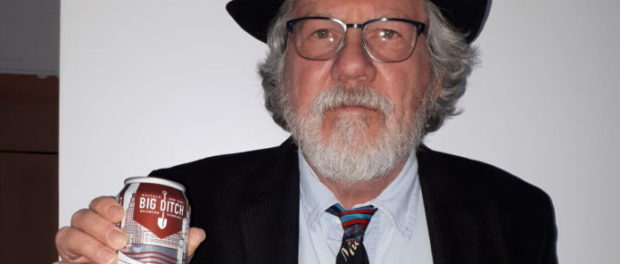Montreal Then and Now: Montreal Then
 After decades of teaching, Zsolt Alapi is a born-again writer, editor, publisher, who has made his home in Montreal for over four decades.
After decades of teaching, Zsolt Alapi is a born-again writer, editor, publisher, who has made his home in Montreal for over four decades.
Written by Zsolt Alapi
So it’s around 11:30 p.m. on a balmy night in June. The year is 1979, and my friend Carl and I are sitting in the Rising Sun on Ste. Catherine across from the Spectrum, waiting for the last set of the evening: the Blues legend, Lightnin’ Hopkins. Things have been delayed; his back up musicians have been arrested at the Champlain border crossing for possession of weed, and Doudou Boicel, the enigmatic owner, has had to make frantic, last minute calls to get a drummer, bassist, and someone on alto sax at short notice to stand in.
Carl and I are both expats from the U.S., he a former ensign in the U.S. Navy who had managed to ride out his tour in San Diego before following a woman up to Montreal, and me, a draft dodger who ended up here through a fluke of fate in 1970, just as the FLQ Crisis was about to happen and American troops were starting to withdraw from Vietnam. This was Montreal in the days when everyone drank and danced at the Rainbow on Stanley, when The Yellow Door had the likes of Jesse Winchester and Penny Lang performing, when The New Penelope near McGill featured Dave Van Ronk and Utah Philips, when the nearby Swiss Hut was where you went to buy hash as you sat over quarts of Dow, waiting for The Man.
There are only about 50 people left, tops, in the club. Doudou is at the bar speaking with the ticket girl, a waif-like creature who is a cross between Patti Smith and Amy Winehouse. He is dressed in a colorful, hand-died dashiki that flows to the ground, looking like a regal African tribal chief with his harem of women and his commune at the corner of Aylmer and Prince Arthur in the McGill Ghetto. Doudou is our god, and the Rising Sun is our haven where we come weekly to listen to all the greats—and he has brought them all to Montreal—Earl “Fatha” Hines, Big Momma Thornton, Dexter Gordon, Professor Longhair, John Hammond…and the list goes on to read like a “Who’s Who” of jazz and blues.
We are stoned. Seriously so. We have smoked one of Carl’s “bombers” and then somehow crawled upstairs where we sit in the very front row just below the stage sipping Wild Turkey on ice. Smoking is still permitted, though the place is surely a fire trap, and we do. It adds to the atmosphere somehow.
Lightnin’ Hopkins comes on stage, an older man albeit lithe and fit. He is urbanely elegant sporting a seersucker suit, pork pie hat, and wrap around sunglasses, a Camel plain hanging from his lips, guitar in hand. He has a few words with the musicians that we overhear, “Just y’all follow my lead, boys,” and launches into “Woke Up This Morning,” making his guitar scream on the high notes. Then, in rapid succession, no time for the musicians to even get their breath, “Mojo Hand,” “Nothin’ But the Blues,” “Bald-Headed Woman,” and “Bad Luck and Trouble.” The only musician who can keep up is the chubby, unshaven dude on the alto sax. He and Hopkins join in battle, and they are both soaring in a sweaty, grinning dialogue.
My friend, Carl, is snapping away with his Leica that is resting on the table pointed at the performers, the aperture fully open, no flash allowed or necessary. We are both into it, rocking to the rhythm, rapping to Hopkins, grooving to his soul.
Hopkins sees us and start to play to our madness. He kicks into “Let Me Play With Your Poodle,” and Carl and I look at each other, laughing, knowing. They break for 15, and Lightnin’ and the sax player approach us, sit down. Hopkins has a shot of Jim Beam with a beer chaser we buy him. The sax player, Bob Mover, sweats junk (we later learn) and sips on mineral water. He and Lightnin’ don’t talk—don’t need to—they’ve left it all on stage.
Finally, the last set. It is now into the wee hours with maybe 20 people left in the place at most. It has become our private show. Hopkins twangs his guitar, and Mover answers, a low, sexy growl on the alto. Lightnin’ grins at Mover, at us, flashing gold-capped teeth. It is a dialogue of raunch mixed with the magic of Houston nights blues and early Montreal summer sadness. He finishes with “Blues For My Cookie,” an ode perhaps to some long, lost lover.
Carl’s camera clicks on, bearing testament, remembering.
We are young, in love with this life.
We somehow believe that we will live forever.





